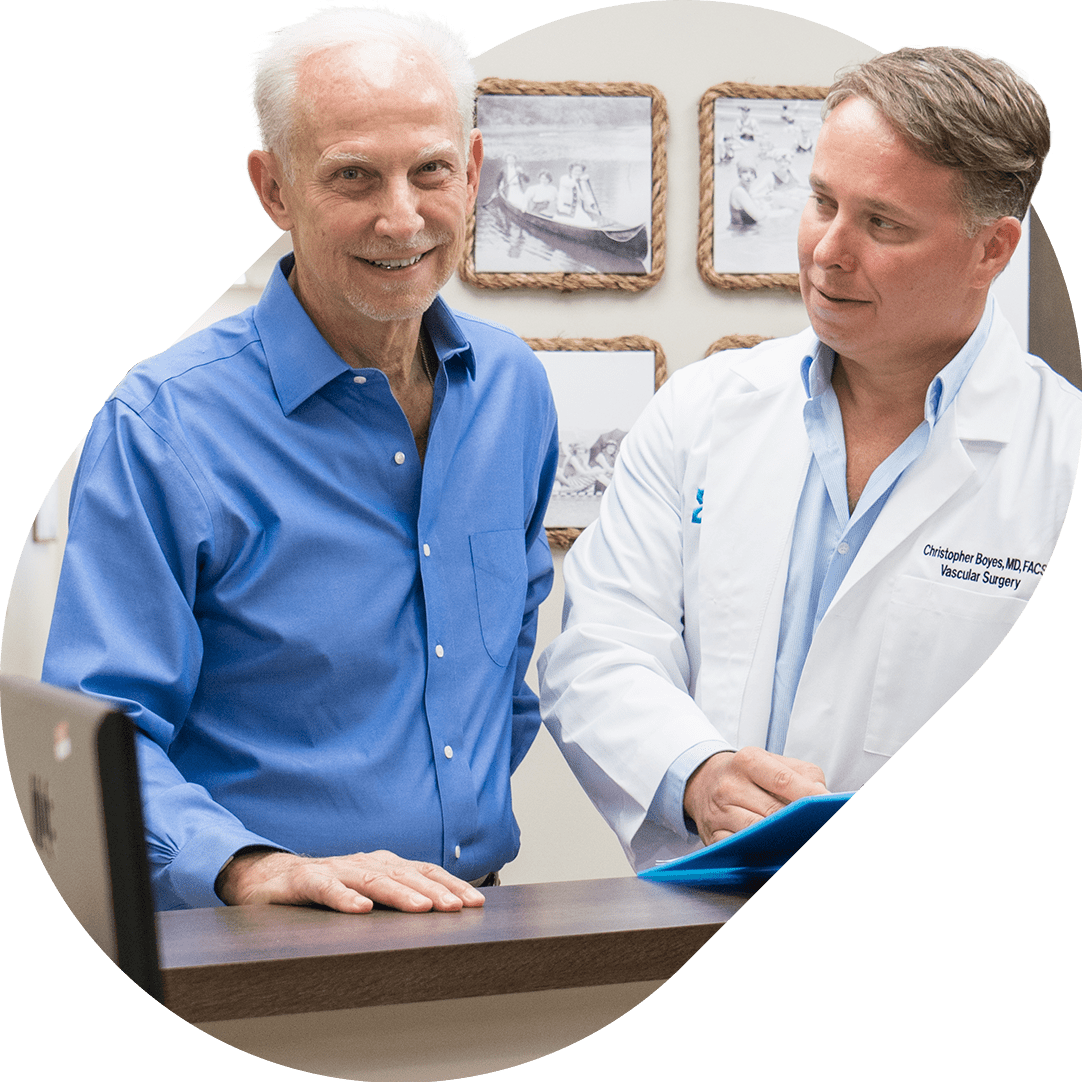An aneurysm is an enlargement or bulge in a weakened section of an artery. It can build over long periods of time and often does not present symptoms or problems until it ruptures. Once ruptured, an aneurysm can result in internal bleeding or stroke, sometimes with fatal consequences. An aneurysm most often occurs in the aorta, brain, abdomen, or knee area.
Arteries are the main vessels that carry enriched blood through a steady flow of pulsating blood. They feed an intricate network of blood vessels that nourish the body’s organs and tissues. An aneurysm can be caused by any condition that weakens an artery wall. High blood pressure exerting excessive force against the arterial wall is a common factor. Atherosclerosis, a narrowing of the arteries through the buildup of plaque caused by cholesterol, fats, and calcium, is another cause. Other causes can be an infection, wound, or genetic anomaly.
While age, weight, smoking, and overall health can have an effect in some cases, aneurysms can occur in nearly anyone. They can also occur in any artery in the body, especially those connected to the heart, legs, kidneys, and brain.

Without symptoms present, aneurysms often go undetected until they expand to the point of rupture, causing serious health risks. However, aneurysms can be detected through a routine screening using an ultrasound, MRI, CAT scan, and even a physical examination.
Once detected, there are several courses of action that may be taken, depending on the size, location, condition, and imminent risk posed by the aneurysm. Some may be monitored regularly over the course of several years, never reaching the level of danger requiring surgery. A doctor may also treat the underlying conditions contributing to the arterial deterioration.
Many aneurysms can be treated with an Endovascular Aortic Repair (EVAR). This minimally invasive procedure inserts a stent graft on the inside of the aneurysm, sealing it off so that all blood flows alongside the endograft instead. Advanced medical technologies enable this procedure to be performed through a needle injection, without even requiring an incision of the skin in most cases.

More complex or severe aneurysms may require open surgery or immediate attention if they pose a health risk.
These are the most common types of aneurysms:
Aortic Aneurysms occur in the aorta, the largest artery in the body. The EVAR procedure is often the course of treatment if medical intervention is required. These aneurysms are sometimes classified more specifically by the region in which they occur – above the heart and below the heart.
Thoracic Aortic Aneurysms (TAA) occur in the chest and usually present no symptoms prior to rupture. Those who have reported symptoms have listed back pain, shortness of breath, hoarseness, or chest pain as indicators. If discovered prior to rupture, TAA is often addressed with minimally invasive EVAR treatment.
Abdominal Aortic Aneurysms (AAA or Triple A) happen in the stomach region. They tend to grow slowly, often without symptoms. Some may notice a pulsating feeling near the navel or other belly pain, and back or side pain. When ruptured, the AAA may cause extensive internal bleeding and fatality. Sometimes a rupture is mistaken for a heart attack or is characterized by pain in the abdomen, chest, jaw, back, or side. Fainting and breathing difficulties may also occur.

Cerebral Aneurysms may be the most alarming as they occur around the brain. They also present no symptoms and are often detected while testing for other conditions. Most brain aneurysms do not rupture or cause any problem at all. Preventative treatments can include blood pressure medication or medical procedures.
Most cerebral aneurysm ruptures occur in the area between the brain and its thin membrane covering.
It may feel like a sudden, severe headache. A rupture can cause bleeding, leading to a hemorrhagic stroke. A ruptured cerebral aneurysm is life-threatening and requires immediate medical attention.
Treating an aneurysm prior to rupture may be advised, but like any surgical procedure, it does not come without risk. The process itself can lead to further complications. Therefore, it is imperative to consult with a board-certified vascular surgeon, who has extensive education, training, and experience.
In South Florida, patients have access to the services of Dr. Christopher Boyes, a renowned board-certified vascular surgeon with years of extensive training in treating chronic venous insufficiency, vascular disease, and other related issues, including aneurysms. As an attending physician at Jupiter Medical Center and Palm Beach Gardens Medical Center, his expertise is often relied upon for advanced and problematic conditions.
Dr. Boyes and his expert medical staff treat patients for all vascular problems at Coastal Vein and Vascular Specialists, a private practice in Palm Beach Gardens, Florida. If you would like a consultation or second opinion, contact them online to schedule an appointment or call 561-295-4110 today.
RESOURCES:
What Is an Aneurysm?
Reviewed by James Beckerman, MD, FACC
https://www.webmd.com/heart-disease/understanding-aneurysm-basics
Atherosclerosis
Written by Janelle Martel; Medically reviewed by Gerhard Whitworth, R.N.
https://www.healthline.com/health/atherosclerosis
Patient Care & Health Information: Diseases & Conditions: Abdominal Aortic Aneurysm
By Mayo Clinic Staff
https://www.mayoclinic.org/diseases-conditions/abdominal-aortic-aneurysm/symptoms-causes/syc-20350688
Types of Aneurysms
Penn Heart and Vascular Blog
https://www.pennmedicine.org/updates/blogs/heart-and-vascular-blog/2018/june/types-of-aneurysms
Types of Aneurysms
American Heart Association Blog
https://www.heart.org/en/health-topics/aortic-aneurysm/types-of-aneurysms
Brain Aneurysm
By Mayo Clinic Staff
https://www.mayoclinic.org/diseases-conditions/brain-aneurysm/symptoms-causes/syc-20361483

Subscribe to our newsletter